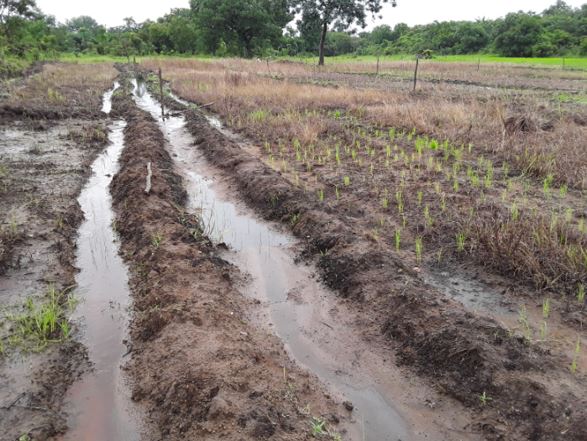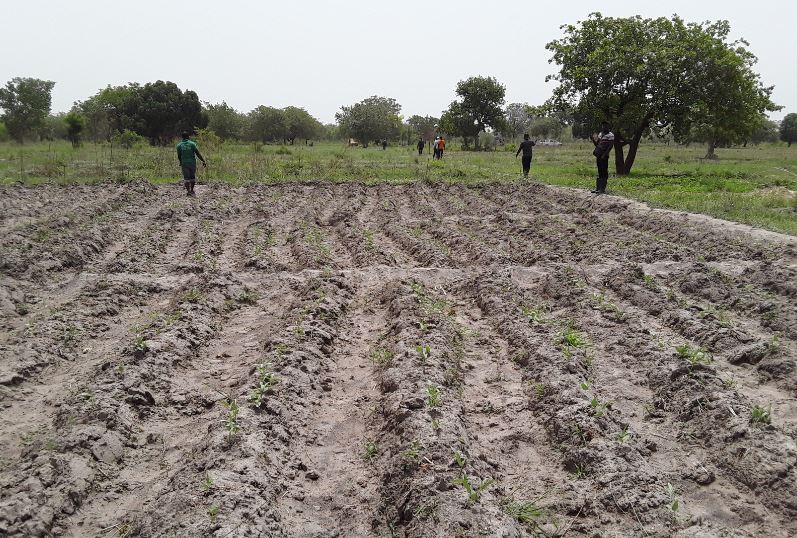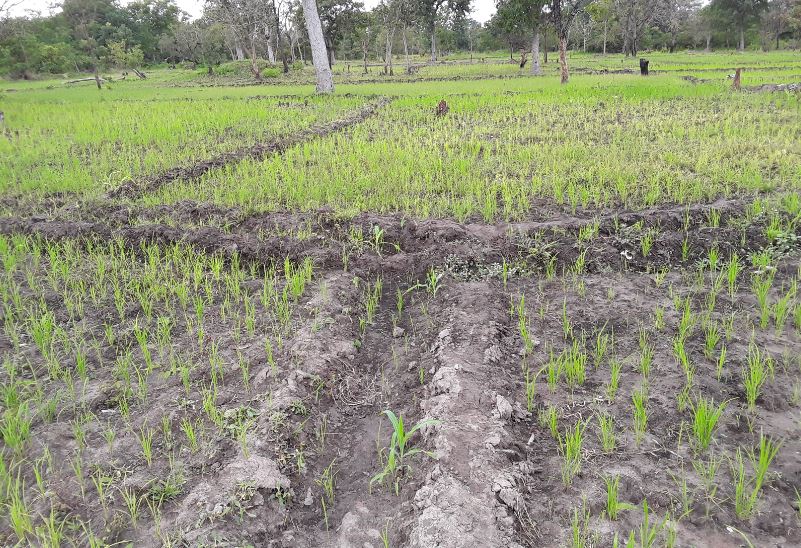Construction of water management infrastructures
Importance
- This development water management infrastructures allows:
- the rational use of the small amounts of water contained in the soil or its economy to make it more available to the rice plants
- mobilizing the water for more a sustainable use for agricultural production
- limitation of land degradation by runoff (erosion)
- The development also aims to:
- avoid rapid drying out of the rice field
- keep the water in the plots as long as possible to use them at will and at the right time
- evacuate excess water when there is too much

Rice field with developped water management infrastructures
Recommendations
- Assurance of the aptitude of the land to be developed:
- an adequate slope (between 1-3%)
- access to the field shouldn't be too difficult
- enough water to grow (rains, stream of water)
- Works must be adapted after heavy rains
- By changing water management infrastructures a cultivation of other crops is possible

Developped rice field adapted to other cultures
Methods
Development of water management infrastructures type I : total water control
Advantages:
- The construction of fairly sophisticated structures allows the permanent mobilization of water to use it at will
The inconvenients:
- It requires :
- a permanent maintenance of the works
- qualified personnel trained beforehand
- It is relatively quite expensive
Development of water management infrastructures type II: partial control of water (example : approach "smart valleys")
Developped rice field following the approach "Smart valleys"
Capacity:
- between 0,5 and less than 30 ha at once
Advantages:
- It is faster to implement and does not necessarily require large investments
- This type does not necessarily require great skill neither for its realization nor for its management
- Requires low cost for development work (over 90% of activities are carried out by beneficiary farmers)
- Is easier to maintain and durable over time
- Can be achieved on low and medium areas of lowlands (0.5 to 10 ha), but also more gradually
- Requires very little external input
- Offers a satisfactory average yield proportional to the investments made (average of 3 to 4 t / ha)
The inconvenients:
- Not
suitable for lowland areas with very rugged terrain - in this case the
involvement of a specialist in the field of rural engineering is
necessary
- Not suitable for lowlands with unorganized producers
- Not
adapted to the development of a bottom of bottom of more than 30 ha
at once (it is however possible in this case to realize a
progressive development)
- Not suitable for alluvial plains
Additional information :
- Smart-valleys: Trainer-facilitator's manual (Defoer et al., 2017), AfricaRice
Rate this content
Pages in Construction of water management infrastructures
No subpages available
